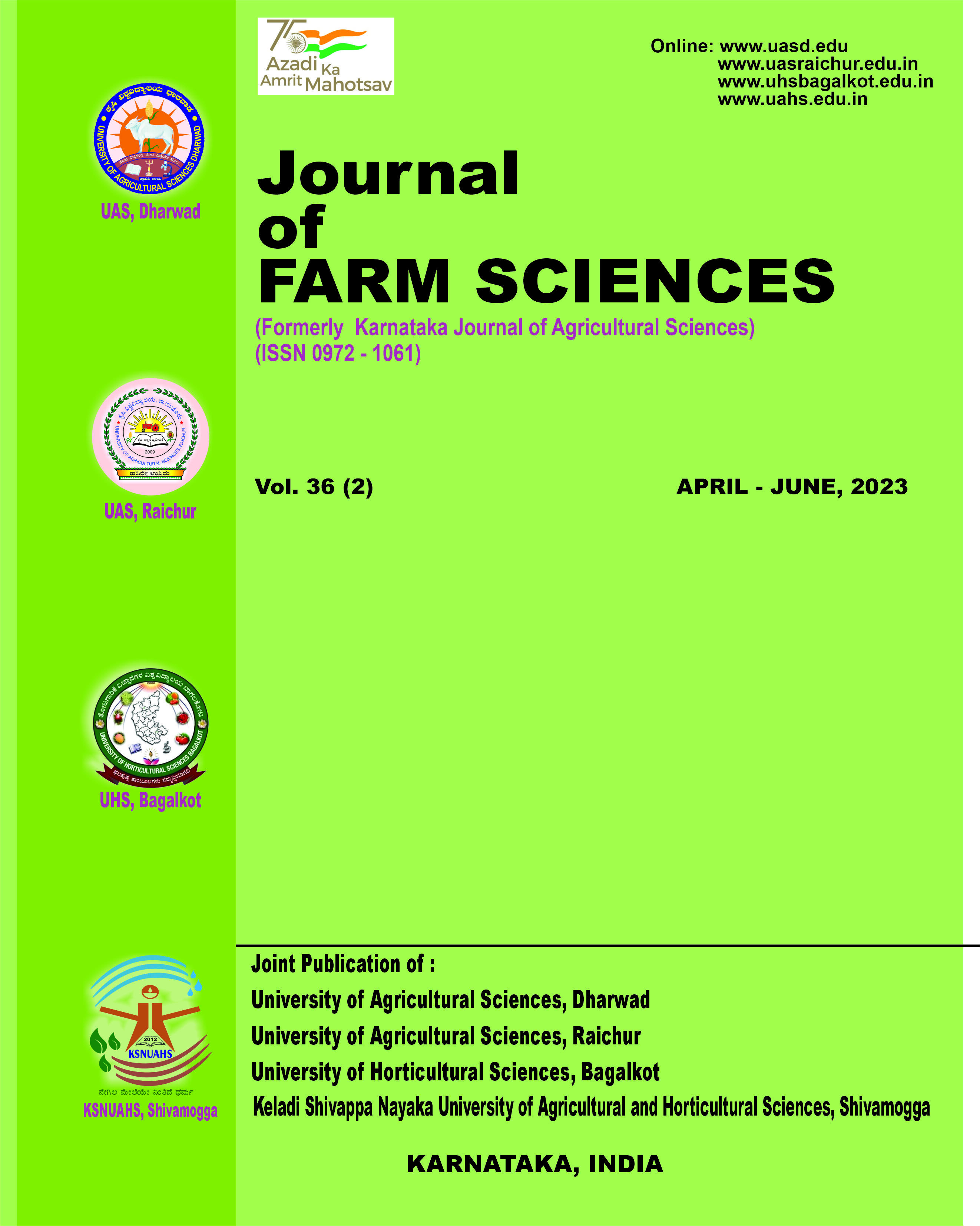Quantification of field survival of Pectinophora gossypiella (Sanders) in Bt cotton across India and their resistance to cry toxins through diagnostic dose assays
Abstract
The survival of pink bollworm Pectinophora gossypeilla (PBW) larvae in Bt cotton bolls is a serious concern. The field scale survival and associated Bacillus thuringiensis Cry toxin resistance has been quantified across 13 locations of India during 2018-19 representing major cotton growing areas. Damage was highest in Junagadh (Gujarath) with 0.89 boll occupancy index (BOI) and 91.42% infestation. Other locations having severe incidence were Surat (Gujarath), Guntur (Andhra Pradesh) Akola (Maharashtra), Coimbatore (Tamil Nadu) with BOI of 0.76, 0.72, 0.71, 0.58, respectively. With low BOI of 0.13 and 0.16 PBW field scale damage appeared to be least in Faridkot (Punjab) and Sirsa (Haryana), respectively. Further, resistance in field strains of these 13 places could also differ in degree of resistance to Cry 1Ac and Cry 2 Ab toxins. The sensitivity of PBW larvae from Junagadh was least with 62.5 ± 5.55% survival to diagnostic dose of 5 μl/mL of Cry1Ac toxin in 21 days test. The places with higher level of resistance to Cry 1Ac were Akola, Surat, Parbhani, with 55.0 ± 4.98, 50.0 ± 2.88, 52.5± 4.78 per cent PBW survival, respectively. Similarly, resistance to Cry 2 Ab toxin to diagnostic dose of 5 μl/mL diet was higher in PBW strains from Junagadh, Akola and Surat with and 55.0 ± 1.96, 52.5±1.00 and 45.0 ± 1.49 survival. Contrarily with low survival the strains of Faridkot and Sirsa appeared to be sensitive to both Cry 1 Ac and Cry 2Ab. Thus, with higher boll occupancy and lower sensitivity Central and South Indian cotton zones appeared to have alarming status and North Indian PBW strains just acquiring resistance.


